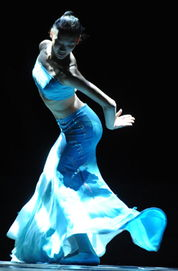2024-10-11 10:27 民族舞
Introduction Pole dance competitions have become an exhilarating platform for showcasing athletic prowess and artistic expression. These events not only highlight the physical skills required to perform various pole tricks but also emphasize the creativity and choreography involved. In recent years, they have gained popularity and recognition as legitimate competitive sports, drawing participants from diverse backgrounds, all eager to demonstrate their talents. History of Pole Dance Competitions The history of pole dance competitions can be traced back to the late 20th century when pole dancing began to emerge as a form of fitness and performance art. Initially, it was often associated with exotic dance clubs, but as the fitness movement gained momentum, the perception of pole dancing shifted. Various organizations began to host competitions, encouraging individuals to showcase their skills in a respected forum. As a result, a vibrant community of performers and enthusiasts formed around the sport, leading to the establishment of numerous competitions around the globe. Structure and Format of the Competition Typically, pole dance competitions are divided into various categories based on skill levels, styles, and age groups. Each competitor performs a routine that lasts between 2 to 4 minutes, incorporating a combination of strength, flexibility, and dance movements. Judging criteria usually include execution, artistic interpretation, difficulty, and overall performance quality. Competitors often spend months preparing their routines, meticulously planning every aspect to ensure they deliver a captivating performance that will impress the judges and audience alike. The Role of Community in Pole Dance Competitions The community surrounding pole dance competitions plays a crucial role in nurturing talent and promoting camaraderie among participants. Many competitors form friendships and support networks that extend beyond the competition stage. Additionally, workshops and training sessions organized by seasoned pole dancers help newcomers learn techniques and improve their skills. This sense of community not only enhances the experience for participants but also contributes to the overall growth and acceptance of pole dancing as a legitimate and empowering sport. In summary, pole dance competitions stand as a testament to the strength, creativity, and athletic ability of performers. They have evolved from niche events to mainstream competitions that respect and celebrate the artistry of pole dancing. As this sport continues to grow, it is clear that pole dance competitions will remain a significant platform for talented individuals to shine and inspire others in the community.